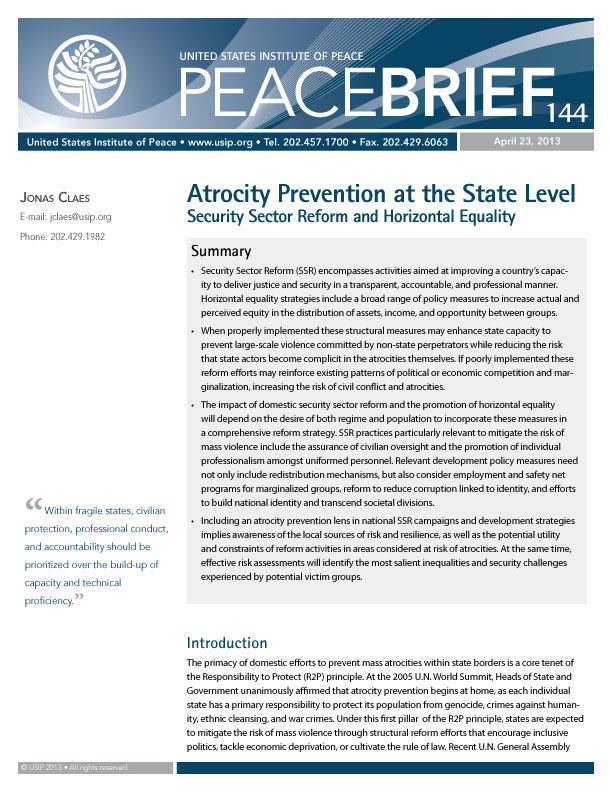Security Sector Reform and Horizontal Equality
In “Atrocity Prevention at the State Level,” Jonas Claes examines how states can mitigate the internal risk of atrocities through security sector reform and improved horizontal equality.
Summary
- Security Sector Reform (SSR) encompasses activities aimed at improving a country’s capacity to deliver justice and security in a transparent, accountable, and professional manner. Horizontal equality strategies include a broad range of policy measures to increase actual and perceived equity in the distribution of assets, income, and opportunity between groups.
- When properly implemented these structural measures may enhance state capacity to prevent large-scale violence committed by non-state perpetrators while reducing the risk that state actors become complicit in the atrocities themselves. If poorly implemented these reform efforts may reinforce existing patterns of political or economic competition and marginalization, increasing the risk of civil conflict and atrocities.
- The impact of domestic security sector reform and the promotion of horizontal equality will depend on the desire of both regime and population to incorporate these measures in a comprehensive reform strategy. SSR practices particularly relevant to mitigate the risk of mass violence include the assurance of civilian oversight and the promotion of individual professionalism amongst uniformed personnel. Relevant development policy measures need not only include redistribution mechanisms, but also consider employment and safety net programs for marginalized groups, reform to reduce corruption linked to identity, and efforts to build national identity and transcend societal divisions.
- Including an atrocity prevention lens in national SSR campaigns and development strategies implies awareness of the local sources of risk and resilience, as well as the potential utility and constraints of reform activities in areas considered at risk of atrocities. At the same time, effective risk assessments will identify the most salient inequalities and security challenges experienced by potential victim groups.
About this Brief
About 25 policymakers, scholars, and nongovernmental organization (NGO) leaders participated in an input session organized by the U.S. Institute of Peace on April 2, 2013. The participants analyzed the utility of internal security sector reform and the domestic promotion of horizontal equality for the prevention of mass atrocities or R2P crimes. This Peace Brief describes the key findings and conclusions from the working meeting, and serves as input for the U.N. Secretary-General’s report in advance of the U.N. General Assembly’s interactive dialogue this summer on the protection responsibilities of the State in accordance with the Responsibility to Protect principle.
